Start Exploring Keyword Ideas
Use Serpstat to find the best keywords for your website
How To Use Landing Pages For Successful Marketing Campaigns

While the concept of a landing page seems pretty simple — it's any standalone page distinct from your website and aimed at generating leads or driving traffic to other pages of your site — putting it into practice can be way more complex.
In this landing page marketing guide, I'm going to walk you through the ins and outs of landing pages, and suggest a few actionable ways to use them in your marketing campaigns.
Let's get started.
Landing pages for campaigns by the numbers
All this just comes to prove that, on the whole, landing pages campaigns are under-utilized, and that figuring out how to incorporate them effectively into your marketing strategy is one of the best ways to stay ahead of the pack!
How to use landing pages in your marketing campaigns: 3 smart tactics
How to use landing pages in your marketing campaigns: 3 smart tactics
#1: Create a new landing page for every PPC campaign you run
#1: Create a new landing page for every PPC campaign you run
Just be sure that you've researched your keywords and target audience thoroughly before you build the page.
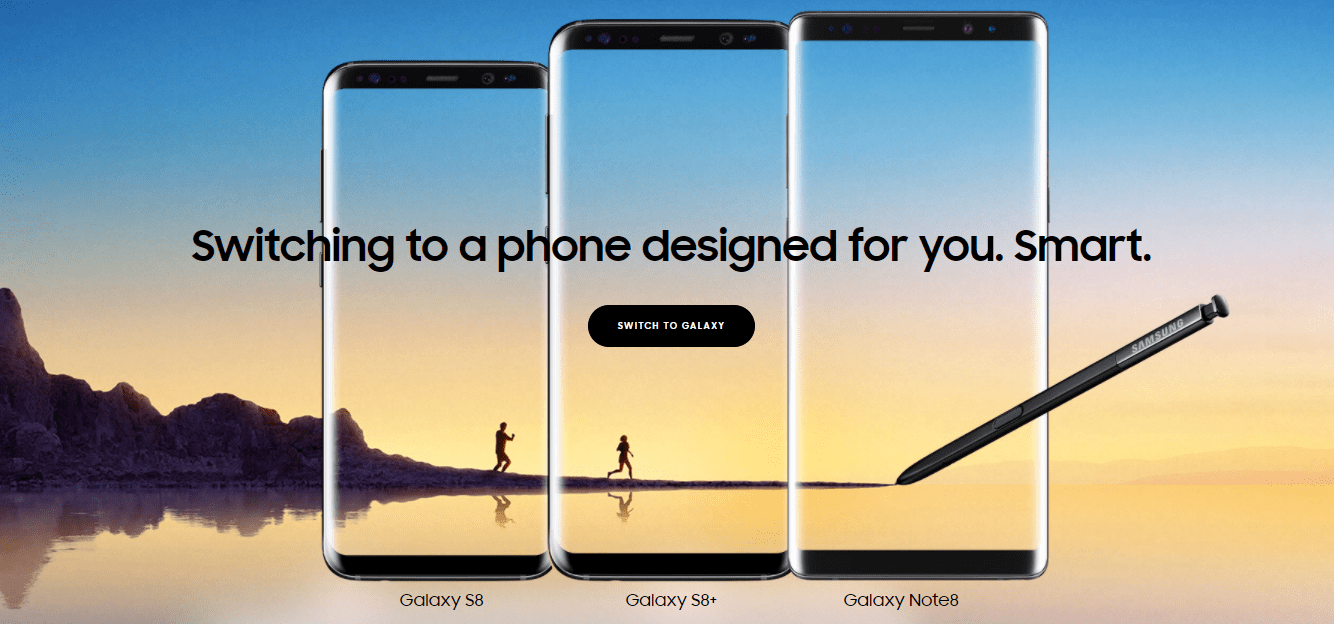
#2: Use landing pages to provide customer segments with custom destinations
#2: Use landing pages to provide customer segments with custom destinations
Before you build a landing page campaign to complement your SMM strategy, ensure you've created a compelling offer and a unique value proposition. Remember that landing pages aren't the place to make a hard sale or wax poetic about how great your brand is. Social media is an organic platform, and landing pages should follow suit. Keep it natural and user-focused for the best results.
For example of a brand that does this well, consider cosmetics company Glossier:
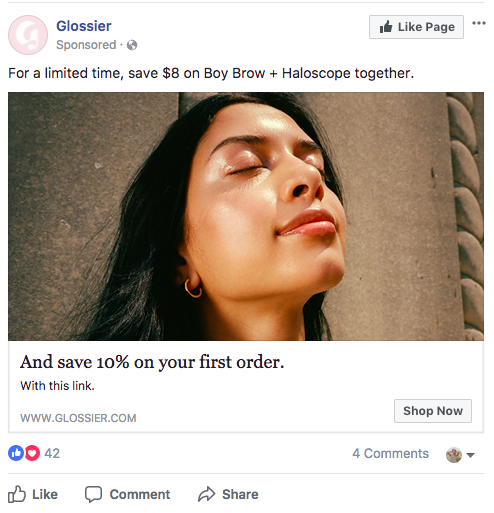
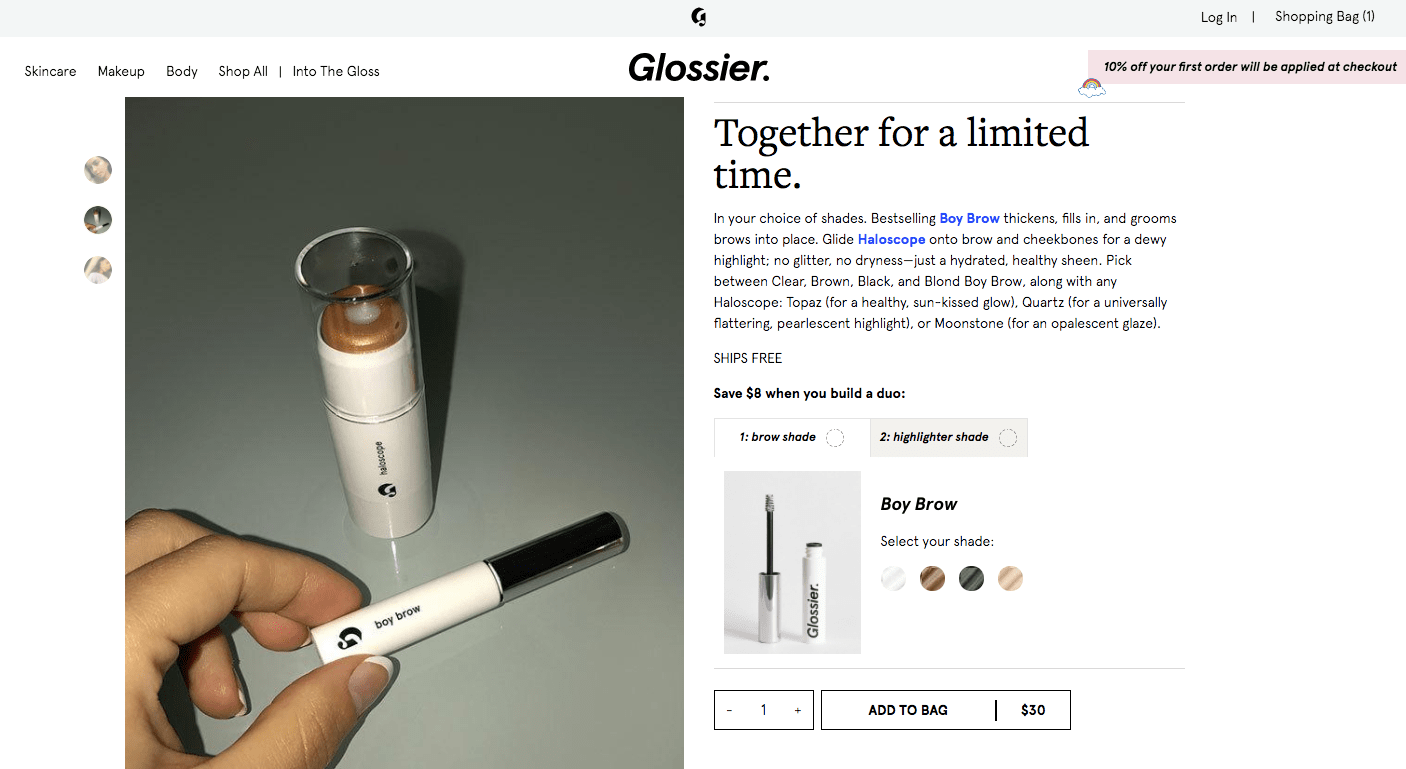
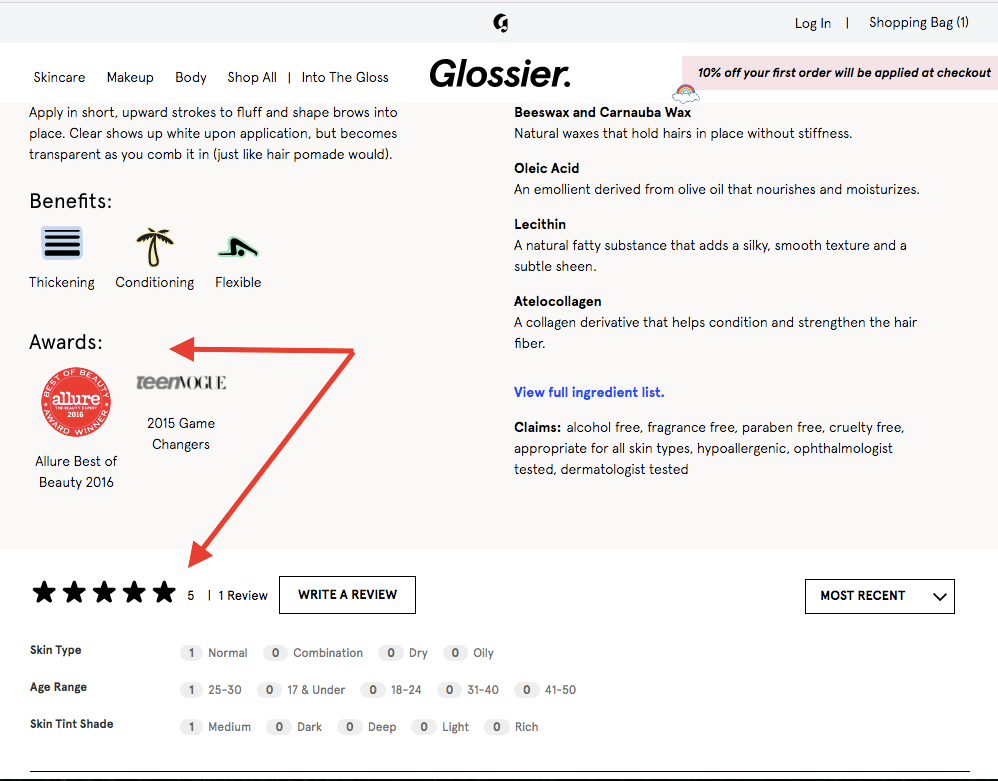
#3: Use landing pages to capture emails
#3: Use landing pages to capture emails
Even when you're using landing pages to build your email subscribers, though, you'll want to keep brevity in mind. Yes, landing pages provide a good opportunity to share long-form offers with your leads, but they should still be concise, to-the-point, and respectful of the reader's time.
When I first started building campaign landing pages, I treated them like novels. Instead of writing a short, concise offer and a unique call-to-action, I was busy penning Moby Dick and getting all excited about how much my readers would love it.
Guess what? They didn't. NOBODY converted.
Eventually, I figured out that the best offer doesn't have to be long. When I started paring things down and focusing, instead, on the reader's experience, things took off like gangbusters. Quicksprout confirms this in a really compelling case study: Confidis, a French organization specializing in credit loans, was building landing pages to encourage people to sign up for a program.
The first page was the definition of long-form: it included images, navigation, customer support links, and more. The second version of the page stripped all these things out and kept it simple and straightforward. The results looked like this: 48% more people converted to the shorter version of the page than the longer one!
10 essential tips for landing page optimization
10 essential tips for landing page optimization
#1: Focus your landing page strategy on a single offer
Here's an example of how lifestyle coach Tim Ferriss does this on the landing page for his podcast:
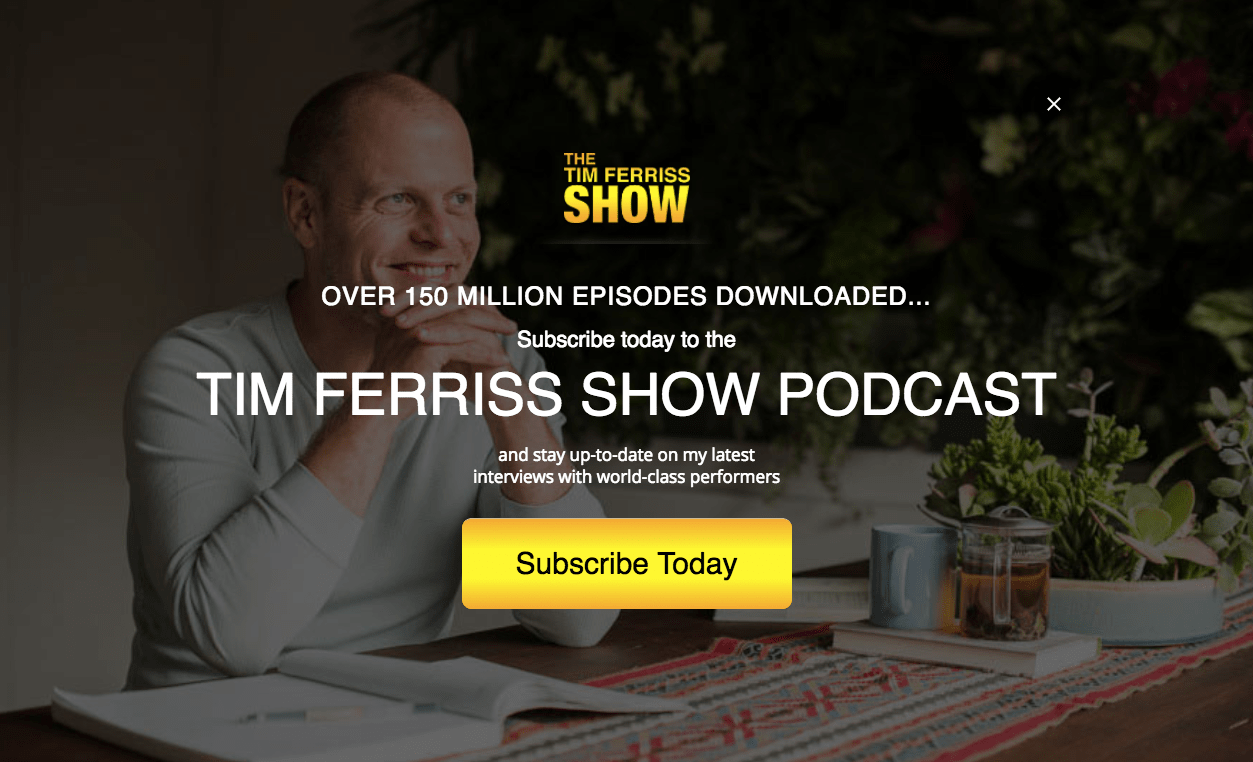
#2: Don't make anything besides forms and opt-in buttons clickable
#2: Don't make anything besides forms and opt-in buttons clickable
#3: Optimize EVERYTHING for mobile
#3: Optimize EVERYTHING for mobile
Think you have to be a design genius to create mobile-friendly landing pages? Think again.
There are a number of advanced website builders, like Ucraft, that provide built-in tools to optimize your landing pages for any mobile device. Using Ucraft to create an LP or your personal website, you'll find that every template is automatically mobile-responsive.
When you're optimizing your landing page, don't forget to optimize your forms and CTAs, as well. For an example, check out this well-optimized landing page by Neil Patel:
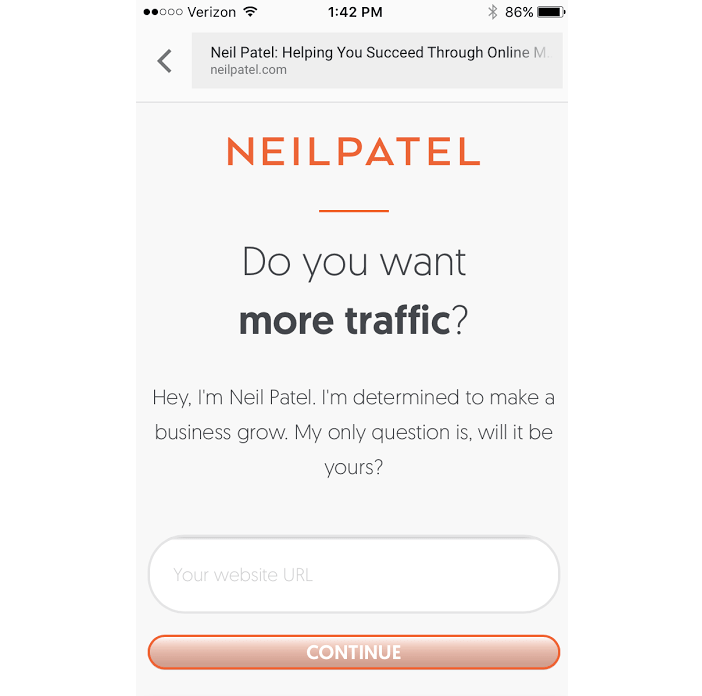
#4: Add a video
#4: Add a video
For best results, build an in-depth explainer video or testimonial video for each landing page you create. Alternately (although this isn't quite as effective as adding a video), you can opt to include high-quality images that communicate your value proposition.
It'll boost your engagement and offer the social proof people need to take the leap! Here's a Crazy Egg page that does it well:
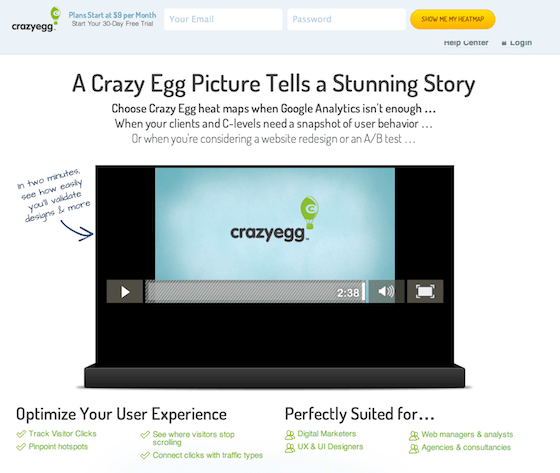
#5: Build more pages
#5: Build more pages
If you're a small business that doesn't have any use for 15 landing pages, remember that you're not bound to that number. The general takeaway is this: the more landing pages you create for your business, the more likely people will convert. With this in mind, create a new page for every campaign you run, and be sure each is unique from the next.
#6: Follow the checklist of the landing strategy
- A headline and sub-headline: these should include keywords and be actionable and compelling for your audiences.
- A description: keep it brief and emphasize the offer's value.
- An image: you can also use a video if you'd prefer. Every page should have at least one visual element.
- An opt-in form: this is for capturing visitor information, and should be simple to use.
Here's another Tim Ferriss page that does this well:
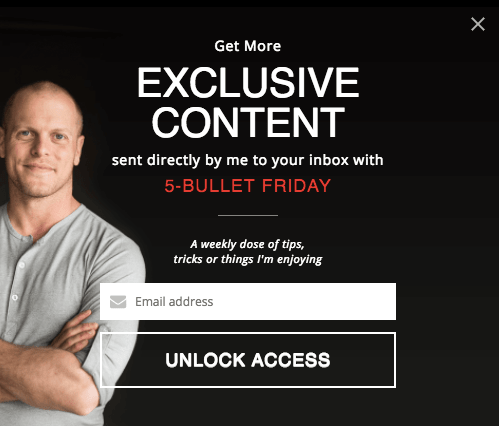
#7: Keep your headline and CTA aligned
#7: Keep your headline and CTA aligned
Instead, keep your CTA and headline consistent and ensure you're delivering on your promises. This builds trust and keeps users right where you want them. For best results, go so far as to keep your actual wording consistent. For example, if you use the words "free demo," be sure to continue using "demo" and "free" throughout.
#8: Pitch value not features
#8: Pitch value not features
For best results, give your audience tangible bits of information. You might say something "decreases stress by 50%" or "boosts ROI 10x in 3 days." When your readers know that something provides proven results or addresses a specific issue, they're much more likely to dive in.
#9: Make it shareable
#9: Make it shareable
With this in mind, be sure you're only including links to the social profiles you use frequently, and which produce a positive ROI for your brand.
#10: Only collect the information you need
#10: Only collect the information you need
Here's a nice example from HubSpot:
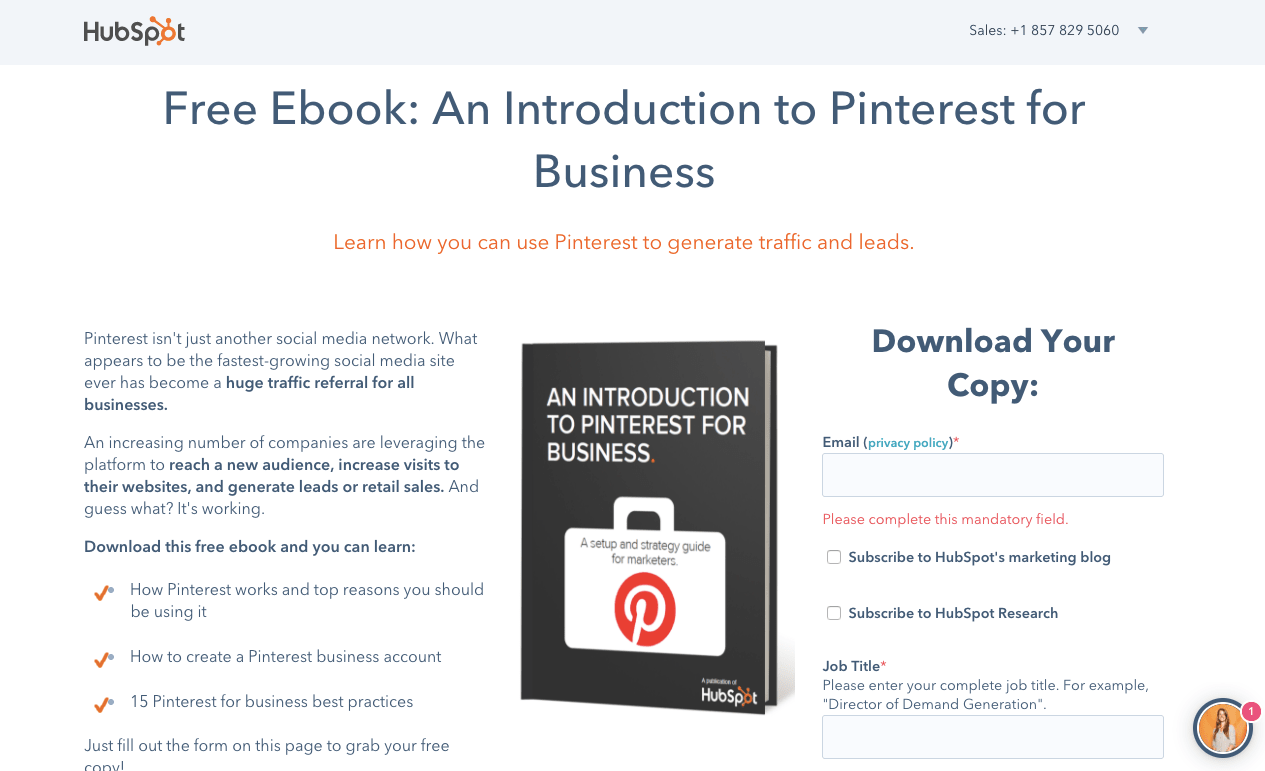
Summary: every great business needs a good landing page
Summary: every great business needs a good landing page
In addition to building them to complement and enhance my social campaigns, I use them to give away free content and more. Plus, building valuable landing pages has become easier than ever due to mobile-friendly drag-and-drop builders.
In conclusion, landing pages are powerful tools for your company. When you know how to create them, when to create them, and how to optimize them for your audiences, you're bound to enjoy higher conversion rates than you ever thought possible.
You can also check the Best Landing Page Builders list by G2Crowd :)
Speed up your search marketing growth with Serpstat!
Keyword and backlink opportunities, competitors' online strategy, daily rankings and SEO-related issues.
A pack of tools for reducing your time on SEO tasks.
Discover More SEO Tools
Domain Analysis Tools
SEO Domain Analysis – gain insights into your website's strengths and weaknesses
URL Inspection Tool
Uncover hidden SEO opportunities with our powerful URL Inspection Tool
Keyword Rank Checker
Google Keyword Rankings Checker – gain valuable insights into your website's search engine rankings
Competitor Website Analytics
Complete analysis of competitors' websites for SEO and PPC
Recommended posts
Cases, life hacks, researches, and useful articles
Don’t you have time to follow the news? No worries! Our editor will choose articles that will definitely help you with your work. Join our cozy community :)
By clicking the button, you agree to our privacy policy.

